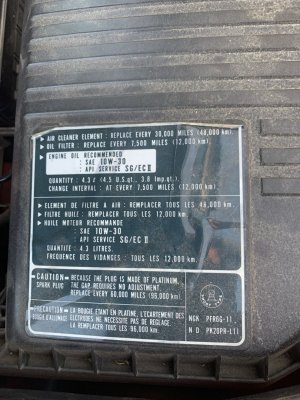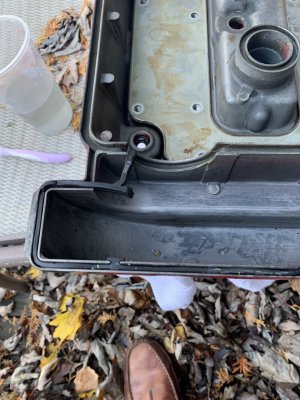Hey guys, I've been daily driving my NSX with minimal issues for a while. Now that the weather is starting to turn (I live in Chicago,) some starting issues have arisen.
It started two weeks ago when I drove my car to Home Depot. When I was trying to leave the store, the car would not start and I had to get a jump. I made it to the intersection of the main road, and then the car stalled. It did start right up again but oh God, I was scared. I was able to complete a very long drive of over 45 minutes without issue.
Similar instances occurred a couple more times, and thankfully I haven't been left stranded. But the car became more difficult to jump start each time, requiring revs from the donor vehicle and my foot on the gas pedal to get it going. Now, I am left in quite the predicament because the car will not start at all, even with a jump start.
Everything electronic in the vehicle is working just fine, and the starter seems to crank pretty strong. The alternator seems to be okay, because the car doesn't have much of an issue running once it gets started up. The on-dash gauge also indicates over 14v while driving- if that is even something to rely on. Battery is only a year old, but the terminal clamps are very corroded and the wires underneath may be just as bad.
The engine runs like a top in most conditions with a very steady idle. It sometimes misfires slightly when it was wet/humid outside.
I'm starting to suspect the ignition system based on a few of the posts I've seen here. Does my experience seem in-line with an ignition problem? I have never had to replace the ignition system on any of my cars, and these issues seem so weird to me considering the car was running so well and was having no mechanical issues.
If you have any experience with a similar issue and/or needed to replace your ignition, please, help!
Edit: I am including this awesome list from Mitchell ProDemand that has many documented cases of NSX no-starts and tiers them based occurrence. It is a pretty awesome tool that and can give you a good starting point when diagnosing common issues with the NSX.

And here, a list of document diagnosis for engine stalling.

And finally, a list of documented diagnosis for misfire or rough idle.

Update- After evaluating these, I'm going to take a look at my fuel filter and see if it might be a little clogged up- then I will look into more expensive fixes like the ignition relay/switch.
It started two weeks ago when I drove my car to Home Depot. When I was trying to leave the store, the car would not start and I had to get a jump. I made it to the intersection of the main road, and then the car stalled. It did start right up again but oh God, I was scared. I was able to complete a very long drive of over 45 minutes without issue.
Similar instances occurred a couple more times, and thankfully I haven't been left stranded. But the car became more difficult to jump start each time, requiring revs from the donor vehicle and my foot on the gas pedal to get it going. Now, I am left in quite the predicament because the car will not start at all, even with a jump start.
Everything electronic in the vehicle is working just fine, and the starter seems to crank pretty strong. The alternator seems to be okay, because the car doesn't have much of an issue running once it gets started up. The on-dash gauge also indicates over 14v while driving- if that is even something to rely on. Battery is only a year old, but the terminal clamps are very corroded and the wires underneath may be just as bad.
The engine runs like a top in most conditions with a very steady idle. It sometimes misfires slightly when it was wet/humid outside.
I'm starting to suspect the ignition system based on a few of the posts I've seen here. Does my experience seem in-line with an ignition problem? I have never had to replace the ignition system on any of my cars, and these issues seem so weird to me considering the car was running so well and was having no mechanical issues.
If you have any experience with a similar issue and/or needed to replace your ignition, please, help!
Edit: I am including this awesome list from Mitchell ProDemand that has many documented cases of NSX no-starts and tiers them based occurrence. It is a pretty awesome tool that and can give you a good starting point when diagnosing common issues with the NSX.

And here, a list of document diagnosis for engine stalling.

And finally, a list of documented diagnosis for misfire or rough idle.

Update- After evaluating these, I'm going to take a look at my fuel filter and see if it might be a little clogged up- then I will look into more expensive fixes like the ignition relay/switch.
Last edited:
















